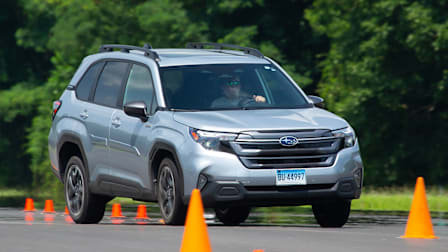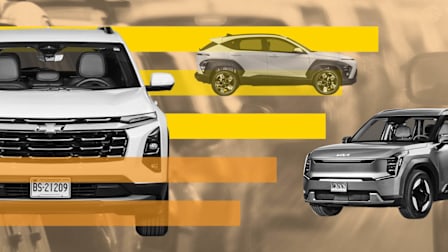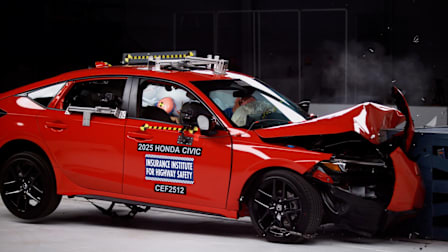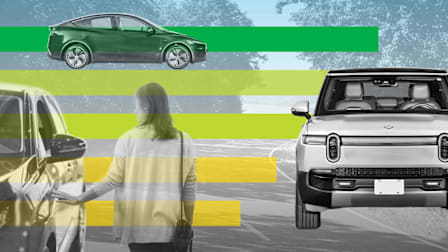Most Vehicles Need Better Nighttime Automatic Emergency Braking, According to IIHS Study
Top safety ratings will soon require automatic emergency braking that works well in the dark
As pedestrian deaths continue to climb, new testing from the Insurance Institute of Highway Safety finds the automatic emergency braking (AEB) with pedestrian detection systems on most cars lacking when it comes to detecting pedestrians in the dark. The IIHS is introducing a new nighttime test, starting with 23 models, most of which have AEB systems that function well during the day. In the darkness of night, however, only four receive top scores.
“As we expected, most of these pedestrian AEB systems don’t work very well in the dark, but it’s clear automakers can rise to this new challenge, as Ford, Nissan, and Toyota each earn Superior ratings for some models,” says David Harkey, president of the IIHS.
How They Tested
The IIHS conducted different tests for each vehicle. One simulated an adult crossing the road, with the vehicle traveling at 12 and 25 mph, and the other an adult walking along the side of the road, parallel to the direction of traffic, conducted at 25 and 37 mph. These two test scenarios mimic two of the scenarios the IIHS performs for AEB systems in daylight. In order to make the scenario as real-world as possible, the test track’s ambient lighting couldn’t be brighter than the amount of light given off by a full moon. The tests are run using high- and low-beam headlights, with points awarded for features such as automatic high beams that switch on as soon as there are no other cars approaching from the opposite direction or when driving on a road that has low ambient light.
The only vehicle to avoid hitting the test dummies in both scenarios at all the different test speeds using both high- and low-beam headlights was the Pathfinder. The other three vehicles that received Superior nighttime AEB ratings—the Mustang Mach-E, Camry, and Highlander—fared a little worse in the 37-mph parallel test. They slowed down drastically, mitigating the impact, but still made contact with the dummy. Advanced-rated vehicles passed all but the high-speed parallel test but struggled to avoid hitting the dummies when using only low-beam headlights. Basic-rated vehicles didn’t do well in the higher-speed tests, and the vehicles that received no credit struck the test dummies regardless of the scenario.
For 2023, the IIHS says an Advanced or Superior rating in the nighttime AEB testing will be required for its Top Safety Pick+ designation.
“AEB systems face the same challenges at night that the human eye does—it’s more difficult to see in the dark,” Stockburger says. “But we’ve already witnessed continued improvement of these systems in addressing more challenging scenarios and expect we will see more success with their ability to detect at night as they have in daylight.”

















